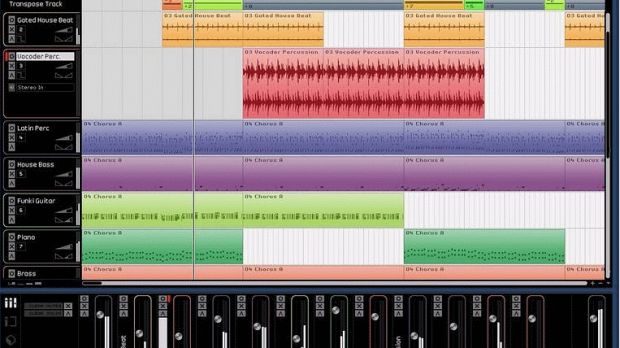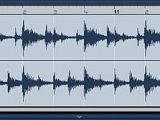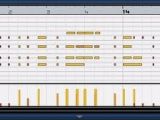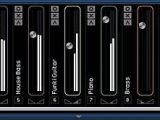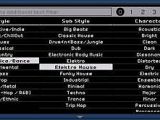Steinberg is one of the best-known names in the music/audio software industry especially for the dedicated professional recording-editing-processing code it produces. The Steinberg DAWs are a standard in the industry and they set new trends while truly being milestones in the development of the audio world.
Now, unfortunately, not every person is able or willing to buy or learn highly complex music software and a lot of people would rather turn to making their own music by means of simpler, cheaper and fairly powerful applications. Since Steinberg have been in the biz for so many years now, they've detected this trend and responded to such request by launching the Sequel at this year's Musikmesse in Frankfurt, Germany.
Sequel is a software oriented towards enthusiasts rather than towards pros; and briefly, this is what's beneath the very alluring and cool GUI: 8-track simultaneous recording, arranger (letting you cut and trigger different phrases as you like), unlimited audio tracks, 16 and 24-bit at 44.1 kHz. The editing capabilities are quite fair for a newbie's needs, with cursor that automatically changes shape and function according to its position relative to the Sequel GUI, thus making working (recording, arranging, mixingand so on).
The Steinberg Sequel is somehow inspired from Apple's Garage Band, some say... Nevertheless it comes in bringing more than 5000 loops out of which 2000 are instrument loops and 3000 are audio ones, 600 instrument, 50 audio track and 150 effect presets. Sequel runs in 128-voice polyphony and Steinberg kindly makes a rather futile brag on what kinds of music Sequel can help you make:
"Style Categories
-Pop: Britpop, Pop/Rock, Teen Pop, Chart Dance, 80's Pop, Dancehall, Disco) -Electronica/Dance: Minimal, Classic House, Elektro House, Funky House, Industrial, Electronic Body Music, Trip Hop, Techno, Drum?n?Bass/Jungle, Elektro, Trance, Dub, Big Beats -Urban (Hip-Hop/RB): Classic R&B, Modern R&B, R&B Pop, WestCoast Hip-Hop, EastCoast Hip-Hop, Rap/Hip Hop, Soul, Funk -Rock/Metal: Blues-Rock, Hard Rock, Rock & Roll, Singer/Songwriter, Heavy Metal, Death/Black Metal, NuMetal, Reggae, Ballad, Alternative Rock, Rockabilly , Thrash Metal, Progressive Rock -Alternative/Indie: Goth Rock, Grunge, New Wave, Punk, College Rock, Dark Wave, Hardcore -Country: Country/Western, Honky Tonk, Urban Cowboy, Bluegrass, Americana, Squaredance , North American Folk -Jazz: New Orleans Jazz, Traditional Jazz, Oldtime Jazz/Dixiland, Fusion, Avantgarde, Latin Jazz, Free Jazz, Ragtime -Blues: Acoustic Blues, Country Blues, Electric Blues, Chicago Blues -Classical: Baroque, Chamber Music, Medieval, Modern Composition, Opera, Gregorian, Renaissance, Classic, Romantic, Soundtrack -Ambient/ChillOut: New Age/Meditation, Dark Ambient, Downtempo, Lounge -World/Ethnic: Africa, Asia, Celtic, Europe, Klezmer, Scandinavia , Eastern Europe, India/Oriental, North America, South America, Australia -Experimental: New Music, Free Improvisation, Electronic Art Music, Noise."
Nevertheless, they would rather not mention so happily the fact that Sequel will not support any plugins so you're technically stuck with what's in the box and what can it do... For $99.99 Sequel may be the perfect tool for the beginning music producer/artist yet I am afraid that due to the lack of plugin support the life of the product in the hands of the eagerly learning young musician would be rather short.
Ah, and one more thing: "sequel" means something that comes in after something else, carrying on its heritage. Let alone that Steinberg Sequel comes after nothing... I wonder how are they gonna name the software next in line after Sequel..

 14 DAY TRIAL //
14 DAY TRIAL // 